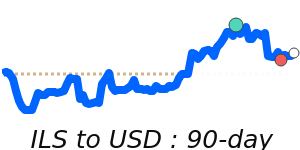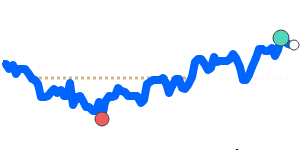The USD to ILS exchange rate is currently bearish, reflecting a weaker trend for the US dollar against the Israeli shekel.
Key drivers include the expectation of multiple interest rate cuts by the Federal Reserve, which may devalue the USD over time. Additionally, a positive economic outlook for Israel, with projected GDP growth of 4.7% in 2026, supports the shekel's strength. Improved geopolitical conditions following the Gaza ceasefire have also bolstered investor confidence in the ILS.
The USD/ILS rate is likely to remain within a stable range, with the exchange rate at recent lows near 3.1480, 2.8% below its three-month average.
An upside risk could emerge if the US economy shows unexpected strength or if commodities prices rise significantly, boosting USD demand. Conversely, a downside risk may stem from escalating geopolitical tensions in the region, potentially weakening the ILS.


